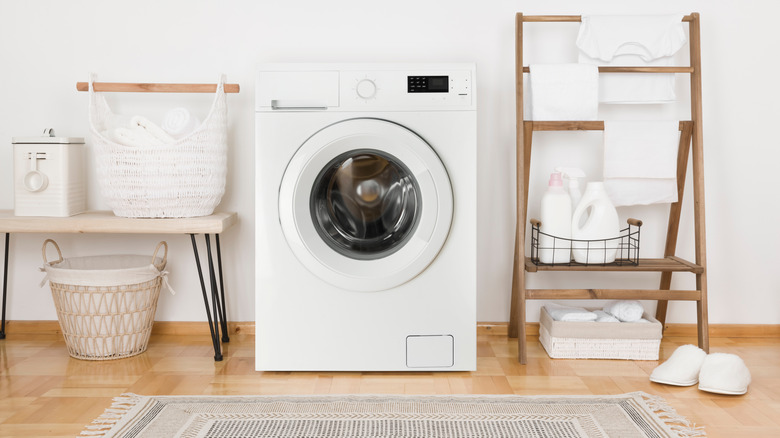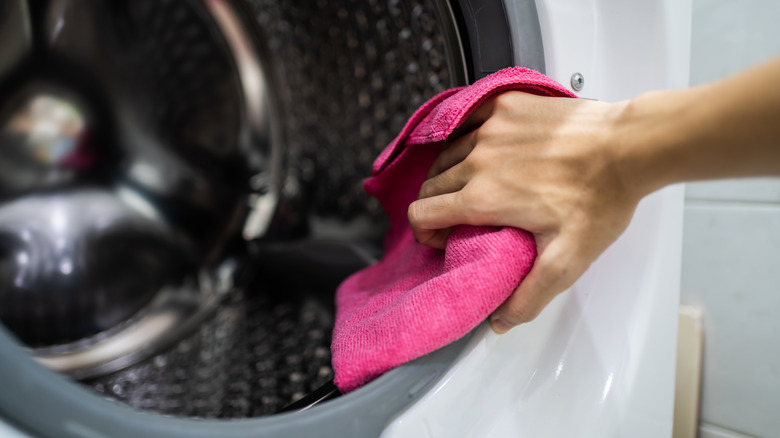Why You Should Consider Leaving Your Front Load Washing Machine Open Between Washes
Does your washing machine smell musty every time you open the door? You may be dealing with mold and mildew growth in the gasket, drum, or hoses. These fungi thrive in warm, damp places, so your closed front-load washing machine is their perfect environment. The best and easiest way to prevent them from infecting your machine is by simply leaving the door open after doing your laundry.
Remembering to follow this last step is only necessary for front-load washers. This is because they have an extra part that top-load machines don't. They need a gasket around the door to create a water-tight seal so it doesn't leak while you're using it. Appliances that open from the top don't need this extra part, so the drum air dries even when the lid is closed. Plus, the humidity in top-load washers never reaches the amount necessary for mold and mildew to grow. Despite this problem with front-load washers, they're still the better option of the two. They're better at cleaning clothes and use less water while doing it. You can still reap these benefits as long as you remember to leave the door open after doing laundry.
Prevent mold and mildew
After running your front-load washing machine, you should always remember to leave the door open for a few hours. You can always leave it slightly ajar or go back later in the day to close the door. It's also not a good idea to leave wet clothes in your machine for more than a few hours. Remembering to open the door allows airflow to come in so the drum and gasket can completely dry between loads of laundry. Otherwise, it becomes a breeding ground for mold and mildew. Your machine can even begin to smell musty and do the same to your freshly washed clothes.
Mold and mildew are more serious than many people think. Aside from leaving a foul smell, they also make people very sick. If you wash your clothes in a dirty machine, the mold spores can transfer onto the fabric and then to your skin. Then you'll suffer from respiratory symptoms along with reactions on your skin. You and your family may experience coughing, runny noses, itchy eyes and skin, and rashes. Depending on the type of mold growing in your washer, there may be more severe symptoms that lead to lung infections.
Use bleach or vinegar to clean your washing machine
Now that you know it's best to leave the washer door open after running a load, you need to clean any built-up mold. You have a few options for cleaning solutions. One is to purchase a commercial mildew cleanser. The other possibilities are to mix your own solution with bleach or vinegar. If you want to make one at home, fill a spray bottle with four parts water and one part of either ingredient. You can always start with the vinegar solution and then mix the bleach if you're dealing with stubborn mold and mildew.
The first place to clean is the rubber gasket because mold usually builds up in it. Make sure you wear gloves and a dust mask to protect yourself from mold spores. Thoroughly spray your cleanser in all the crevices of the gasket and let it sit for a few minutes. You can even scrub it with a toothbrush. Then wipe the gasket with a towel to dry it thoroughly. Next are the washer drum and hoses. Cleaning these parts of the machine is simple. All you have to do is run a load on the hottest setting possible with the solution you've been using. If your washer still smells musty, mold and mildew may have grown behind the drum. To clean that area, you'll need to contact your machine's manufacturer for assistance.


